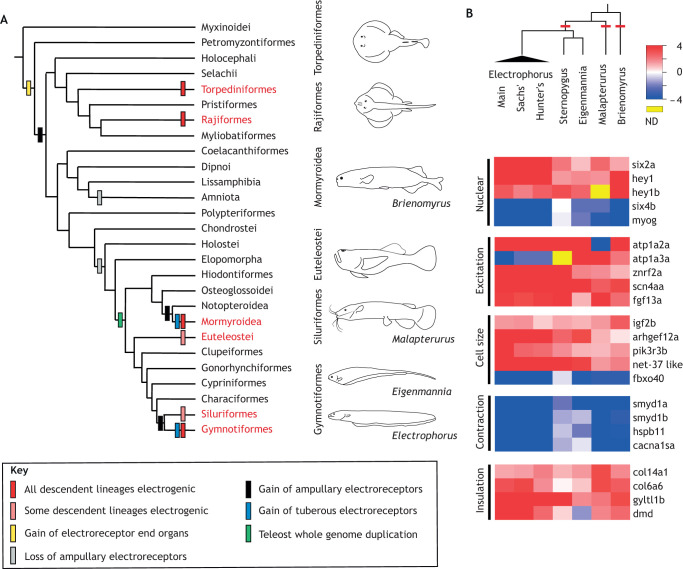Fig. 1.
‘Deep convergence’ illustrated by electric fish. (A) Electric organs (EOs) have evolved six times in the history of vertebrates (red font). The evolutionary history of electroreceptors is also shown, highlighting the independent origin of tuberous electroreceptors, which detect high-frequency (short-duration) electric organ discharge (EOD) signals in weakly electric fish. (B) A recent analysis illustrates remarkably similar patterns of gene expression in orthologous genes between independently derived EOs. The heatmap indicates relative gene expression for functionally important categories: red represents genes that are highly expressed in EOs, blue represents genes that are highly expressed in skeletal muscle (SM). ND, no data available. Note the similarity between independently derived taxa (phylogeny, above). Figure adapted from Gallant et al. (2014a).

